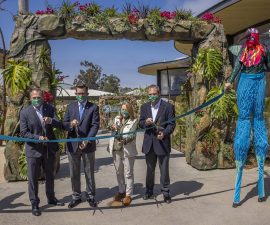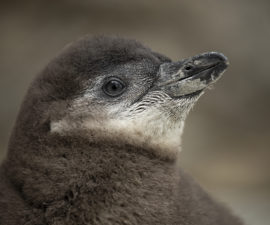“Home sweet home” is the phrase being used at The Giant Panda Research Station—our pandas Bai Yun, Xiao LiWu, and Gao Gao are back home again! It is so good to have them back in their exhibits, and I know our pandas are happy to be back ,too.
Gao Gao has been fired up since his return, very actively walking, scent marking, and lots of bleat vocals. I think he is very much aware of the other pandas in the immediate area, including his great love, Bai Yun!
Bai Yun has been a mixed bag of behaviors. There were days she would be exploring her newly remodeled exhibit, equipped with new lush plants, grass, new climbing structures, and new misting fans for the summer. On other days, she chose to sleep and relax up in the trees.
Mr. Wu, on the other hand, has been a very active bear: climbing, bleating, and—of course—already tearing up the plants in his exhibit. He is quite the rambunctious boy, but he sure knows how to put on a show with his antics with our visitors!
Be sure to stop by the Giant Panda Research Station and welcome our pandas back home!
Kathy Hawk is a senior keeper at the San Diego Zoo.





